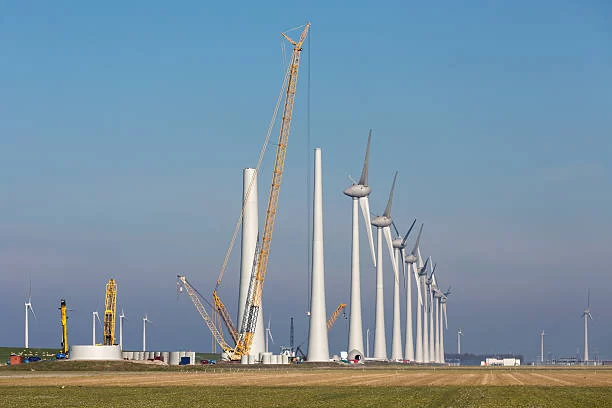Site Selection Criteria for Wind Power Plants
Wind power is a pivotal component of the global renewable energy landscape, offering a sustainable alternative to fossil fuel-based electricity generation. The success and efficiency of a wind power plant depend significantly on the strategic selection of its location. Choosing the right site involves evaluating various factors ranging from wind resource availability to environmental impacts and socio-economic considerations. This article explores the essential criteria for selecting optimal sites for wind power plants.
1.Wind Resource Assessment
The primary criterion for site selection is the wind resource itself. A thorough assessment of wind speed, direction, and consistency over an extended period is crucial. Wind turbines operate most efficiently in areas with steady and strong winds, typically categorized into different wind classes based on average wind speeds. Advanced technologies such as LIDAR (Light Detection and Ranging) are employed to accurately measure wind characteristics at prospective sites before making investment decisions.

2.Topography and Terrain
The physical characteristics of the terrain significantly influence wind patterns and turbine performance. Open, unobstructed landscapes such as plains, ridges, or coastal regions are generally preferred because they allow for smooth airflow and higher wind speeds. Complex terrain with hills, valleys, or dense vegetation can create turbulence and reduce the efficiency of wind turbines. Therefore, flat and moderately elevated terrains are typically favored for wind power installations.
3.Distance to Transmission Infrastructure
Proximity to existing electrical grid infrastructure is critical for the economic viability of wind power projects. Connecting to transmission lines reduces the costs associated with infrastructure development and grid integration. Developers prioritize sites that minimize transmission losses and facilitate efficient distribution of generated electricity to end-users.
4.Environmental Considerations
Environmental impact assessments (EIAs) are mandatory to evaluate the potential effects of wind power plants on local ecosystems and wildlife. Developers must conduct thorough studies to identify and mitigate any adverse impacts on protected species, habitats, and natural landscapes. Sensitivity to noise, shadow flicker, and visual impact on scenic areas also requires careful consideration during site selection and project planning.
5.Land Use and Zoning Regulations
Compliance with land use regulations and zoning ordinances is essential to secure permits and approvals for wind power developments. Sites designated as suitable for renewable energy projects by local authorities often streamline the permitting process. Developers must also engage with communities and stakeholders to address concerns regarding land use changes, property values, and potential impacts on local lifestyles.
6.Meteorological and Climatic Factors
In addition to wind characteristics, meteorological conditions such as temperature, humidity, and atmospheric pressure can influence the performance and maintenance of wind turbines. Sites prone to extreme weather events such as hurricanes or severe storms may require specialized turbine designs and robust structural considerations to ensure operational safety and reliability.
7.Economic Feasibility and Incentives
Evaluating the economic viability of a wind power project involves analyzing capital costs, operational expenses, and potential revenue streams from electricity sales or renewable energy certificates (RECs). Financial incentives such as tax credits, subsidies, and renewable energy mandates at the regional or national level can significantly enhance project profitability and attractiveness for investors.
8.Community and Stakeholder Engagement
Successful wind power projects prioritize community involvement and stakeholder engagement throughout the development process. Addressing local concerns, providing transparent information, and offering opportunities for public participation foster support and acceptance within host communities. Collaboration with landowners, residents, and indigenous groups promotes mutual understanding and enhances the social license to operate.
Conclusion
Selecting an appropriate site for a wind power plant requires a comprehensive evaluation of technical, environmental, economic, and social factors. Each criterion plays a crucial role in determining the long-term success and sustainability of the project. By integrating advanced technologies, environmental stewardship, and community engagement into the site selection process, developers can maximize the benefits of wind energy while minimizing potential impacts on the environment and local communities. As global efforts to mitigate climate change intensify, strategic site selection remains pivotal in accelerating the transition towards a low-carbon future powered by renewable energy.
In conclusion, the future of wind power hinges not only on technological advancements but also on the thoughtful and strategic selection of sites that optimize energy production while respecting environmental and societal considerations.
